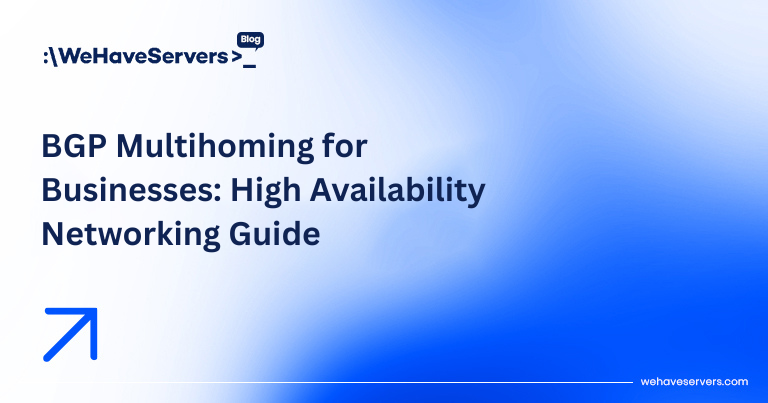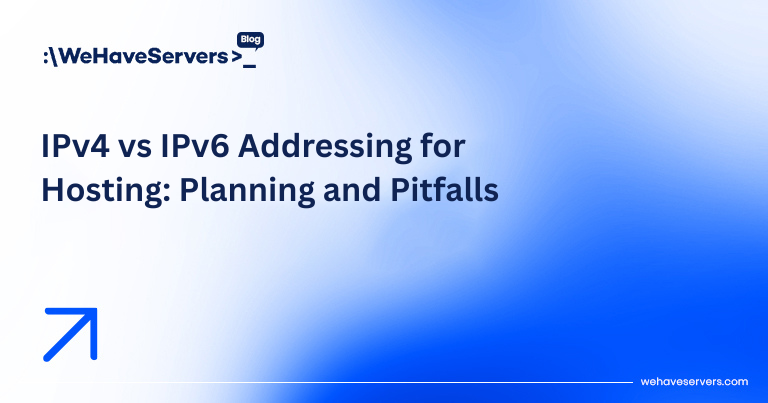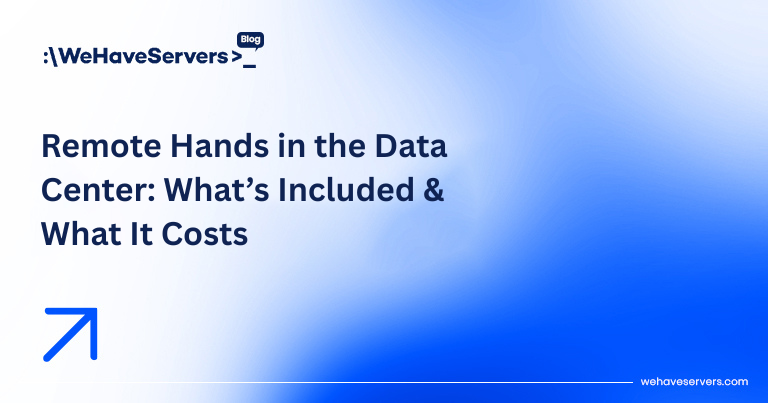
BGP Multihoming for Businesses: High Availability Networking Guide
BGP Multihoming for Businesses: High Availability Networking Guide
When downtime equals lost revenue, high availability isn’t optional. One of the most reliable ways to achieve Internet redundancy for your business or data center is through BGP multihoming. By connecting to multiple Internet Service Providers (ISPs) and announcing your own IP prefixes with the Border Gateway Protocol (BGP), you gain fault tolerance, load balancing, and routing control that single-homed setups cannot provide.
This guide covers everything you need to know about multihoming in 2025: the core concepts, technical requirements, configuration examples, real-world pitfalls, and how to decide if BGP is worth it for your infrastructure.
🔹 What Is BGP Multihoming?
Multihoming means connecting your network to the Internet through two or more ISPs. With BGP (Border Gateway Protocol), you announce your own IP address space (usually provider-independent /24 IPv4 or /48 IPv6) via an Autonomous System Number (ASN). This allows your traffic to flow through whichever ISP is available, or even use both simultaneously for performance.
Single-homed network: One ISP, one point of failure.
Multihomed network: Multiple ISPs, redundancy and control.
🔹 Why Businesses Use Multihoming
- High Availability: If ISP A fails, traffic reroutes via ISP B.
- Performance Optimization: Use local-preference, MED, and communities to prefer lower-latency paths.
- Independence: Avoid lock-in with a single provider.
- Scalability: Handle higher traffic volumes and peak loads.
For businesses where 99.99% uptime is a requirement — SaaS platforms, e-commerce, hosting providers — multihoming is the industry standard.
🔹 Prerequisites for BGP Multihoming
- Public ASN: Obtain from your regional Internet registry (RIPE, ARIN, APNIC). Cost: €50–€500 annually.
- IP Address Space: At least a /24 IPv4 and /48 IPv6 (smaller blocks may be filtered).
- Routers with BGP Support: Cisco ASR, Juniper MX, MikroTik CCR, or Linux servers running FRRouting (FRR).
- Two or more ISPs: Each must agree to accept and propagate your prefixes.
- Technical expertise: Misconfigured BGP can cause outages or even global routing leaks.
🔹 Example Network Topology
[Business Network]
|
[Edge Router]
/ \
ISP A ISP B
Your edge router peers with both ISPs via eBGP. It announces your prefixes, receives full or partial routing tables, and makes decisions based on policies.
🔹 BGP Configuration Examples
1. Cisco IOS-XE
router bgp 65001
bgp log-neighbor-changes
neighbor 192.0.2.1 remote-as 64501
neighbor 192.0.2.1 description ISP-A
neighbor 198.51.100.1 remote-as 64502
neighbor 198.51.100.1 description ISP-B
!
address-family ipv4
network 203.0.113.0 mask 255.255.255.0
neighbor 192.0.2.1 activate
neighbor 198.51.100.1 activate
exit-address-family
2. Juniper JunOS
set policy-options policy-statement EXPORT term 1 from route-filter 203.0.113.0/24 exact
set policy-options policy-statement EXPORT term 1 then accept
set protocols bgp group ISP-A type external
set protocols bgp group ISP-A peer-as 64501
set protocols bgp group ISP-A neighbor 192.0.2.1 export EXPORT
set protocols bgp group ISP-B type external
set protocols bgp group ISP-B peer-as 64502
set protocols bgp group ISP-B neighbor 198.51.100.1 export EXPORT
3. FRRouting (Linux)
router bgp 65001
bgp router-id 203.0.113.1
neighbor 192.0.2.1 remote-as 64501
neighbor 198.51.100.1 remote-as 64502
!
address-family ipv4 unicast
network 203.0.113.0/24
neighbor 192.0.2.1 activate
neighbor 198.51.100.1 activate
exit-address-family
🔹 BGP Policy Controls
Simply announcing your prefix to two ISPs isn’t enough. You need policy-based routing to control traffic:
- Local Preference: Prefer one ISP for outbound traffic.
- AS Path Prepending: Make one path less attractive to influence inbound traffic.
- MED (Multi-Exit Discriminator): Suggest preferred entry points to neighboring ASNs.
- Communities: Tag routes to signal ISPs (e.g., “do not advertise to peer X”).
🔹 High Availability Strategies
- Failover: If ISP A fails, all traffic reroutes to ISP B.
- Load Sharing: Balance traffic across ISPs for efficiency.
- Geographic Diversity: Terminate ISPs at different POPs or data centers.
- Out-of-Band Monitoring: Always test reachability from external probes (RIPE Atlas, ThousandEyes).
🔹 Costs of Multihoming
- ASN & IP Space: €50–€500/year.
- Routers: €2000+ for enterprise gear, or €500+ for MikroTik/FRR nodes.
- Transit Costs: Each ISP charges for bandwidth commits (e.g., €1–€3 per Mbps in Eastern Europe).
- Staff Expertise: Requires skilled network engineers.
While costs are higher than single-homed setups, the downtime savings and SLA improvements often justify the expense.
🔹 Real-World Case Studies
Case 1: E-commerce Company
- Single ISP outage caused 3 hours downtime = €100k lost revenue.
- Implemented BGP multihoming with two Tier 1 ISPs.
- Now operates with 99.99% uptime SLA.
Case 2: SaaS Provider in Romania
- Connected to RCS-RDS and GTS Telecom with ASN 65002.
- Load-balanced traffic geographically for customers in Bucharest vs Frankfurt.
✅ Conclusion
BGP multihoming is not just for ISPs — it’s a business-critical strategy for any company requiring high availability and Internet independence. While setup requires investment in ASN registration, routers, and expertise, the benefits in uptime, performance, and control make it the gold standard for enterprises in 2025.
At WeHaveServers.com, we help clients deploy multihomed BGP in Romania/EU with blended bandwidth, redundant upstreams, and SLA-backed guarantees, whether for colocation racks or dedicated servers.
❓ FAQ
Do I need my own ASN for multihoming?
Yes. To announce prefixes to multiple ISPs, you need a public ASN from your regional registry.
Can I multihome without BGP?
Not effectively. Static routing with multiple ISPs doesn’t scale and can’t handle failover automatically.
How many ISPs should I connect to?
At least two. Three or more provides additional resilience, but costs rise quickly.
Is BGP multihoming expensive?
More than single-homing, but downtime costs often outweigh the extra transit and router expenses.
Can small businesses use BGP?
Yes, if they control their own IP space. Otherwise, consider managed multihoming services from data centers or hosting providers.



